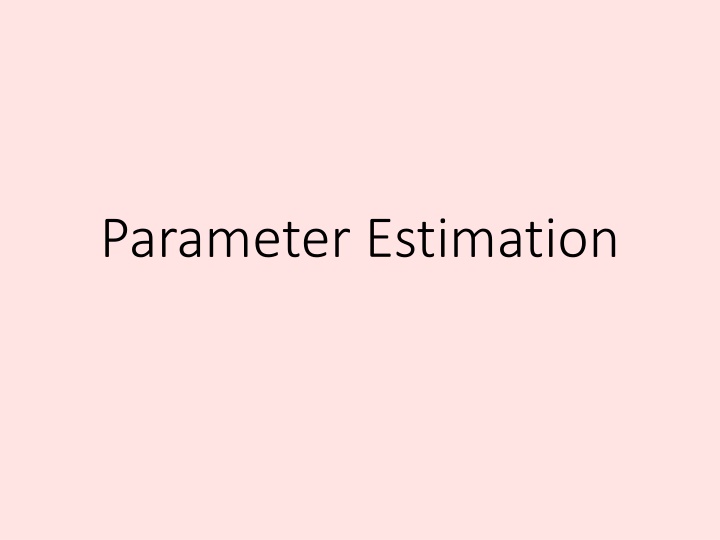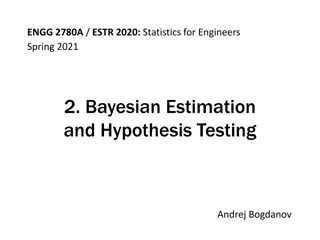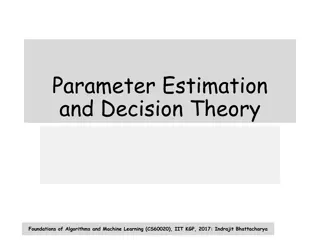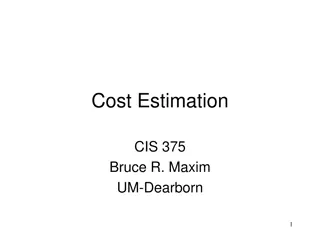
Understanding Parameter Estimation in Statistics
Explore the concept of parameter estimation in statistics, including the definition, types of estimators (point and interval), and how to find point and interval estimates for population parameters. Learn the difference between estimators and parameters, and gain insights into the importance of estimators in statistical modeling.
Download Presentation

Please find below an Image/Link to download the presentation.
The content on the website is provided AS IS for your information and personal use only. It may not be sold, licensed, or shared on other websites without obtaining consent from the author. If you encounter any issues during the download, it is possible that the publisher has removed the file from their server.
You are allowed to download the files provided on this website for personal or commercial use, subject to the condition that they are used lawfully. All files are the property of their respective owners.
The content on the website is provided AS IS for your information and personal use only. It may not be sold, licensed, or shared on other websites without obtaining consent from the author.
E N D
Presentation Transcript
ParameterEstimation .Parameterestimationisdefinedastheexperimental determinationofvaluesofparametersthatgovernthe systembehaviour,assumingthatthestructureofthepr ocessisknown
What are estimators? .Instatistics an estimator is a functiono of the data or sample that is used to infer the value of an unknown parameter in popoulation in statistical model . .Thus the estimators,the quantity of interest and it's result are different from each other.
There are two types: 1.Point Estimator 2.Interval Estimator
Point Estimator point estimation involves the use of sample data to calculate a single value (known as a point estimate since it identifies a point in some parameter space) which is to serve as a "best guess" or "best estimate" of an unknown population parameter (for example, the population mean).
How do you find the point estimate? Suppose that you want to find out the average weight of all players on the football team at Landers College. You are able to select ten players at random and weigh them. The mean weight of the sample of players is 198, so that number is your point estimate. Assume that the population standard deviation is = 11.50.
Interval Estimator Interval estimation, in statistics, the evaluation of a parameter for example, the mean (average) of a population by computing an interval, or range of values, within which the parameter is most likely to be located.
How do you find the interval estimate of the population mean? In the large-sample case, a 95% confidence interval estimate for the population mean is given by x 1.96 / n. When the population standard deviation, , is unknown, the sample standard deviation is used to estimate in the confidence interval formula.
Difference between estimator and parameter An "estimator" or "point estimate" is a statistic (that is, a function of the data) that is used to infer the value of an unknown parameter in a statistical model. While an estimator refers to a parameter in a model. If I understand it correctly, then, the mean is a statistic and may also be an estimator.






















